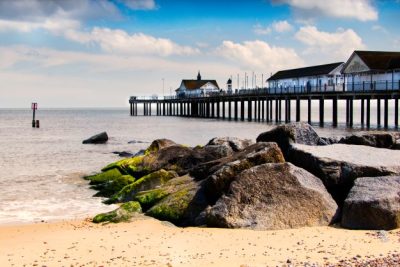Post Production Photo Editing Tips
This will be ongoing and I will add techniques and procedures as and when I come across them.


Ever wondered how those magazine photos looked so perfect or models all have flawless skin?
Although some of it is due to good camera technique, lighting and the quality of equipment, in most cases Post Production techniques take an average image and turn it into something exceptional.
The first thing I needed to know was what order to do things and how to do them – so I have included a basic WORKFLOW procedure (also in PDF to download for easy reference) that can be followed to ensure an orderly process and fantastic results.
I have also set out several methods of enhancing your photos and of course there are numerous tutorials on-line that deal with specific aspects.
This is not a definite list and there are many alternate methods of doing the same thing but these are what works for me – until I find a better way!
Post Production editing tips - click on the title to go to topic
1. Workflow
Workflow using Affinity Photo V2 but other photo editing software e.g. Photoshop are available.
If editing a non-Raw image e.g. jpg – then skip this section
Raw Development
* Raw development is a non-destructive process so you retain to your original Raw file.
* DO NOT overdo any adjustments here as most will be revisited in the photo persona
- Import or open raw image in photo editor Develop Persona
- Using the Basic panel on RHS and work through tools to correct or adjust your image especially exposure, clarity & white balance.
- Ensure Output profile is set to sRGB (or your preference)
- Under Lens, tick Lens Correction and select your lens from the dropdown list. You can manually adjust the setting if desired.
- For wide angle lenses adjust the scale to 99% or 98% to reveal more of your image if desired.
- Select other corrections if required
- Details & Tones sections have other adjustments available if required
- Overlays section can be used to “mask” part of the image – using the overlay tools on LHS and apply adjustments to just that part of the image.
- Overlay gradient tool is used for applying effects to just part of the image.
- Select Output – Raw Layer (Embedded) is a good choice – and click Develop.
Photo Editing (jpg, png, etc)
- Your image opens in Photo Persona.
- Straighten and Crop the image as required.
- Adjust White Balance as required using adjustment layer.
- Adjust Global Lighting using Brightness & Contrast Adjustment Layer.
- Adjust Global Colouring using Vibrance Adjustment Layer.
- Targeted Lighting using Brightness & Contrast Adjustment Layer. Invert the layer and paint in White to required areas.
- Targeted Colouring using HSL Adjustment layer – same process as #5
- Clean Up – add new pixel layer and move it to just above background layer. Select inpainting tool – switch on Current Layer & Below and ensure White is selected and paint over any blemishes to remove them.
- To add Special Effects such as Black & White. Split toning, Vignette, etc. use the appropriate adjustment or filter layer at the top of the layer stack.
- Sharpening (leave until last) – Zoom to 100% and select High Pass Filter and ensure it is at the top of the layer stack. Increase Radius slider to about 2 pixels, select monochrome and change blend mode to overlay.
- Revisit or add to any of your adjustments to fine tune the image.
- Save As .afphoto file (to recreate all the layers) and/or export it as .JPG file at 95% quality.
Download PDF version
2. Infill Corners after Straightening
After you use the straightening tool you usually find blank triangles in the corners. You can of course just crop the image to remove them but sometimes this will remove too much of the image so you need to fill them. Instead of using the clone stamping tool or putting a second image behind, you can just go to:-- Select Menu – Alpha Range – Partially Transparent
- Check that the Blank areas are covered – if not go to Select Menu – Grow/Shrink and adjust the radius.
- Go to Edit Menu – Inpaint ( the program will analyse and infill the areas selcted)
- If the process takes too long or is incomplete – you may need to Rasterise the layer by going to Layer Menu – Rasterise (Do this immediately after straightening before step 1)
- Deselect the corners (Ctrl-D)
- Crop the image to desired size – if necessary
3. Remove Background
You may want to extract an object from a photo so:-
- Open the photo and in the Layers panel – Duplicate Background
- Select new background layer and apply High Pass Filter (Layer Menu – New Live Filter Layer – Sharpen – High Pass Filter)
- Set Radius to about 6 pixels, select Monochrome and select Vivid Light
- Select Layers Menu – Merge visible
- Deselect both Background Layers
- Select Selection Brush Tool and select image (Use Add & Subtract to modify selection
- Click Refine and select output – New Layer with Mask
- Go over Edges to refine selection
- Apply
- Use the Haze Filter if necessary
- Select the new Pixel Layer and export it as a PNG file (crop if necessary)
4. Apply adjustments to Large areas of an image
Masking Adjustment layers
- Add new adjustment layer and choose the adjustment you require(e.g. Brightness & Contrast)
- Adjust the Brightness and Contrast to levels you require – some areas may be adversely affected.
- Ensuring the adjustment layer is selected, pick up the the Paint Brush Tool
- Adjust the width, opacity, flow and hardness as desired.
- On Colour Panel select Black (means subtracting from Mask).
- “Paint” into areas on image to reduce or remove the effect of the adjustments where they are not wanted.
- You can have as many adjustment layers as necessary.
5. Apply adjustments to Small areas of an image
Masking & inverting Adjustment layers
- Add new adjustment layer and choose the adjustment you require(e.g. HSL)
- Adjust the HSL to the level you require – don’t worry about the other areas of the image at this stage.
- Ensuring the adjustment layer is selected go to the layer menu and select Invert – now no adjustment is being applied to the image.
- Ensuring the adjustment layer is selected, pick up the the Paint Brush Tool
- Adjust the width, opacity, flow and hardness as desired.
- On Colour Panel select White (means Adding to the Mask).
- “Paint” into areas on image to give the effect of the adjustments where they are wanted.
- You can adjust the sliders to modify the HSL effects.
- You can have as many adjustment layers as necessary.
6. Clean -up and removing blemishes
- Add new Pixel layer and move to just above the Background Layer.
- Select Inpainting Brush Tool and adjust size etc of brush.
- Select Current Layer and Below from the context tool bar
- Ensure White is selected
- Paint over any blemishes to remove them (when the mouse is released)
- Repeat the painting as necessary.
7. Re-touch the Skin (using Frequency Separation)
- Duplicate background layer (Control-J) and select it.
- Go to top of screen and select Filters then Frequency Separation.
- High Frequency = Texture
- Low Frequency = Colour
- Adjust radius to about 9-20 to reveal texture but keep colour – click apply.
- Turn off Low Frequency and Background Layers to keep just High Frequency layer.
- Select Inpainting brush tool and ensure only Current Layer is selected.
- Keeping brush size about same size as blemish, paint over the blemishes.
- Select Low Frequency Layer and duplicate it (Control-J).
- Turn off High Frequency Layer.
- Grab Paintbrush Tool with 0% hardness, 100% opacity and low flow of 3%.
- Increase brush size to about size of iris in the eye.
- Holding Alt key click on skin area (to sample the colour) and paint over blemishes.
- When finished – turn on all the layers to view the finished effect.
- Save or export as required.
8. How to Blur the Background
- Open picture in Affinity Photo 2 (similar process for Photoshop)
- Select foreground subject (people, animal, objects, etc.) using “Selection Brush Tool”. Select “snap to Edges” & “Soft Edges” BUT NOT “All Layers”.
- “Paint” over the subject using the Modes Add & Subtract until the animated outline surrounds your selected subject(s).
- Click “Refine” for fine adjustment and click “Apply” when done.
- Click “Select” menu then “Save Section” then “As Spare Channel”.
- Right click on Background Layer and click on “Duplicate”.
- Hide duplicate background layer by clicking on blue/grey button.
- Select original background layer (deselecting duplicate background layer).
- Click on “Select” menu then “Grow/Shrink” and add about 35 pixels to the selection using the slider.
- Click “Edit” menu then “Inpaint” and the object will be “removed”.
- Turn on the duplicate background layer & select it.
- Go to Channels Studio Panel (next to Layers Studio Panel) then right click on “Spare Channel” and choose “Load to Pixel Selection”. This will replace the existing selection with the one we saved earlier.
- Ensuring the top (duplicate)background layer is selected click on the “Select” menu then “Invert Pixel Selection”.
- Press “Delete” on your keyboard – which will delete the background leaving the object(s).
- Select the original Background Layer ONLY and go to the “Layer” menu & choose “New Live Filter Layer” then “Blur” then “Gaussian Blur” and add the required blur to the background using the slider.
- Go to “Select” menu and choose “Deselect” to remove the animated outline.
- Job done – but you can go back and adjust your blur later if required.
